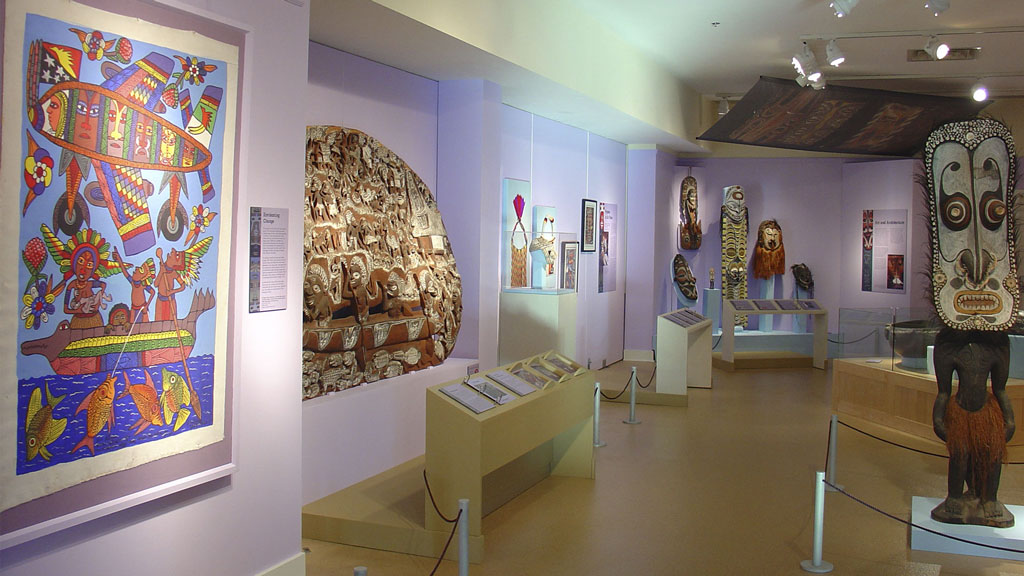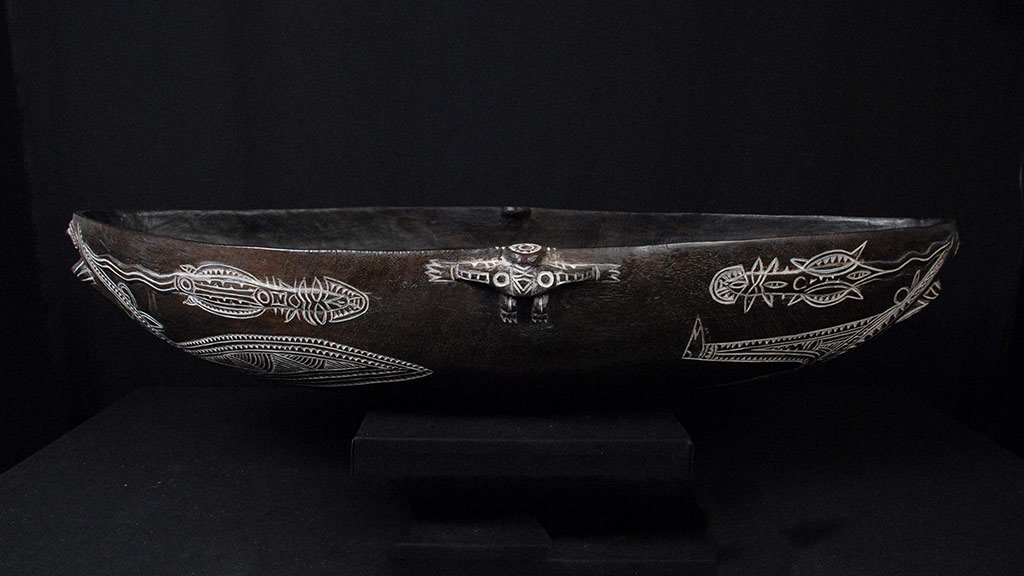
The Virginia M. and James. D. Tobin Melanesian Collection
The Museum’s Virginia M. and James D. Tobin Melanesian Collection consists of approximately 375 artifacts collected in Papua New Guinea between 1984 and 1990. The collection is made up of a wide array of objects, including carved wooden figures representing ancestral spirits, masks of basketry and wood, carved storyboards, spear throwers, and woven bags.
The collection concentrates on the sacred art of Papua New Guinea, with a focus on the contemporary practices of its people. Most of the artifacts represent the cultural traditions of two particular tribes: the Abelam of the Prince Alexander Mountains and the Iatmul of the middle Sepik River. These groups are known for their elaborate ritual traditions and the ways in which they express these traditions through their art.
These objects were part of a group of approximately 1,500 objects collected by Jim Tobin of Portland, Oregon. They were originally donated to the Logan Museum of Anthropology of Beloit College in 1995 by Virginia Tobin in memory of her late husband. We acquired our portion of the collection in 2005, when Logan Museum staff and curators sought out other museums to care for portions of the collection.
Notable Objects
-
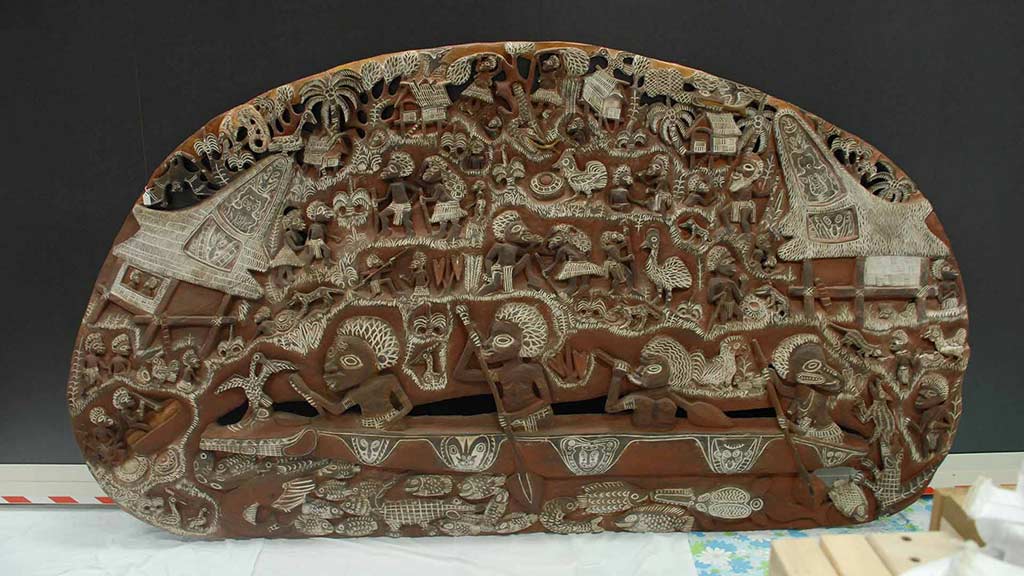 Storyboard Objects like this storyboard represent both the physical and spiritual realms. Papua New Guinea Kambot Village, Keram River Artist: Zacharias Wepnang 2004.17.0045
Storyboard Objects like this storyboard represent both the physical and spiritual realms. Papua New Guinea Kambot Village, Keram River Artist: Zacharias Wepnang 2004.17.0045 -
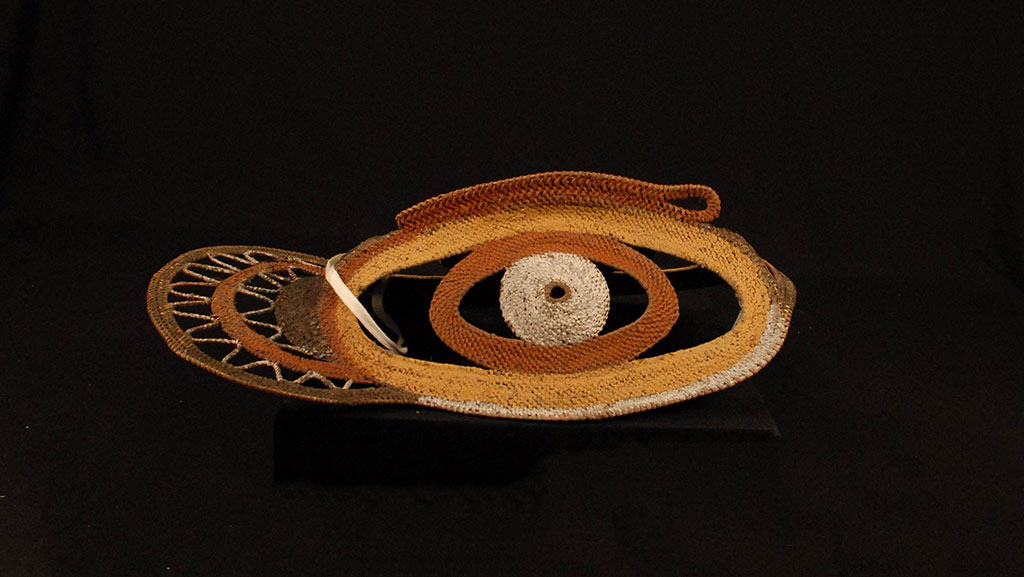 Yam Mask This yam mask would have been used during a harvest/male fertility ceremony and placed on a giant yam grown by a particular man in the tribe. Papua New Guinea Maprik, Sepik District 2004.17.0150
Yam Mask This yam mask would have been used during a harvest/male fertility ceremony and placed on a giant yam grown by a particular man in the tribe. Papua New Guinea Maprik, Sepik District 2004.17.0150 -
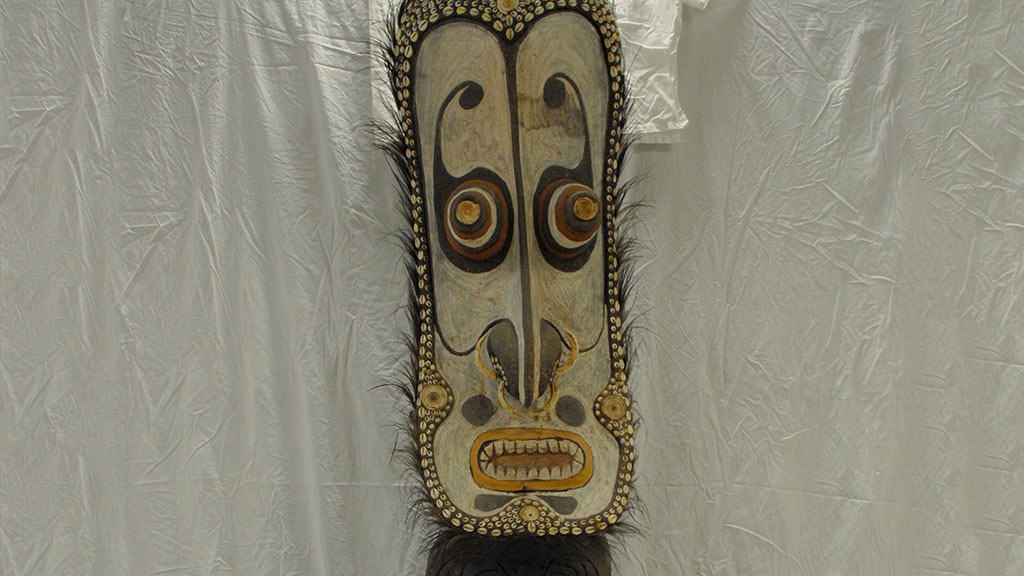 Orator’s Stool In traditional Sepik River politics, men would gather around an orator’s stool to debate community issues and decide important cases. Each speaker would emphasize his points by placing leaves or coconut fronds on the stool or hitting the leaves on the stool’s flat seat to create an audible exclamation point. Elaborate stools such as this one were almost exclusively used for matters of warfare or homicide. Papua New Guinea Chambri Lakes, probably Aibom, Middle Sepik 2004.17.0265
Orator’s Stool In traditional Sepik River politics, men would gather around an orator’s stool to debate community issues and decide important cases. Each speaker would emphasize his points by placing leaves or coconut fronds on the stool or hitting the leaves on the stool’s flat seat to create an audible exclamation point. Elaborate stools such as this one were almost exclusively used for matters of warfare or homicide. Papua New Guinea Chambri Lakes, probably Aibom, Middle Sepik 2004.17.0265 -
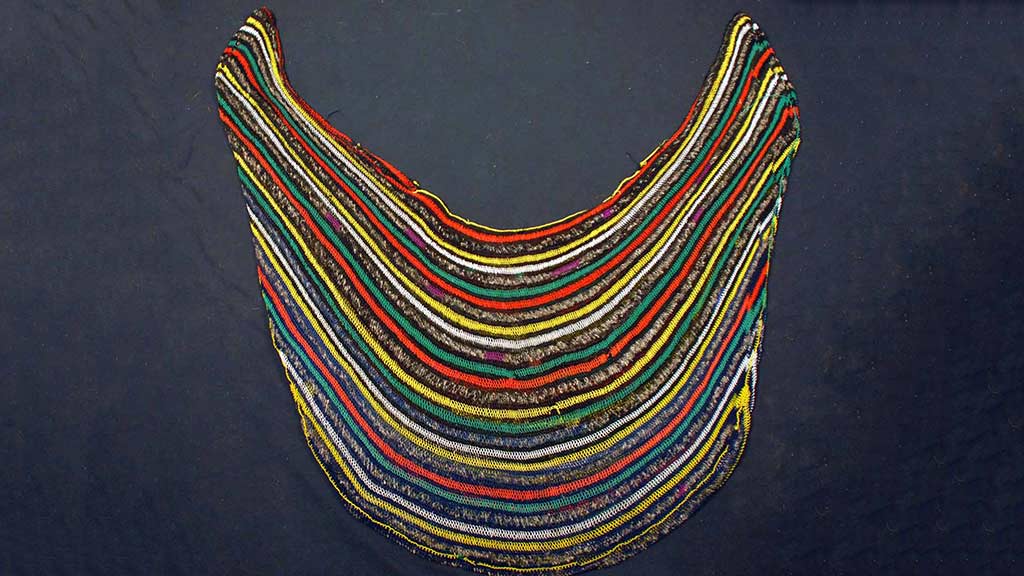 Bilum Bag This bilum bag is one of 52 such bags from the Tobin collection. These bags are primarily made by women, using a unique looping technique. Bilum bags are used for carrying everything from firewood and hunting gear to valuables and even babies. They are also used in rituals and festivals. Bilum styles vary from one region to another in the country. Papua New Guinea Southern Highlands, Mendi 2004.17.0122
Bilum Bag This bilum bag is one of 52 such bags from the Tobin collection. These bags are primarily made by women, using a unique looping technique. Bilum bags are used for carrying everything from firewood and hunting gear to valuables and even babies. They are also used in rituals and festivals. Bilum styles vary from one region to another in the country. Papua New Guinea Southern Highlands, Mendi 2004.17.0122 -
 Feast Bowl This is one of nine feast bowls acquired by the Museum, each with carving and ornamentation unique to the site where it was made. In elaborately decorating these items, Tami Island craftsmen muster their skills to honor the spirits and make visible their appreciation for sustenance. The Tami Islanders trade these bowls to other islanders for food items needed to complement scarce local resources. Papua New Guinea Morobe Province, Huon Gulf, Tami Island 2004.17.0226
Feast Bowl This is one of nine feast bowls acquired by the Museum, each with carving and ornamentation unique to the site where it was made. In elaborately decorating these items, Tami Island craftsmen muster their skills to honor the spirits and make visible their appreciation for sustenance. The Tami Islanders trade these bowls to other islanders for food items needed to complement scarce local resources. Papua New Guinea Morobe Province, Huon Gulf, Tami Island 2004.17.0226 -
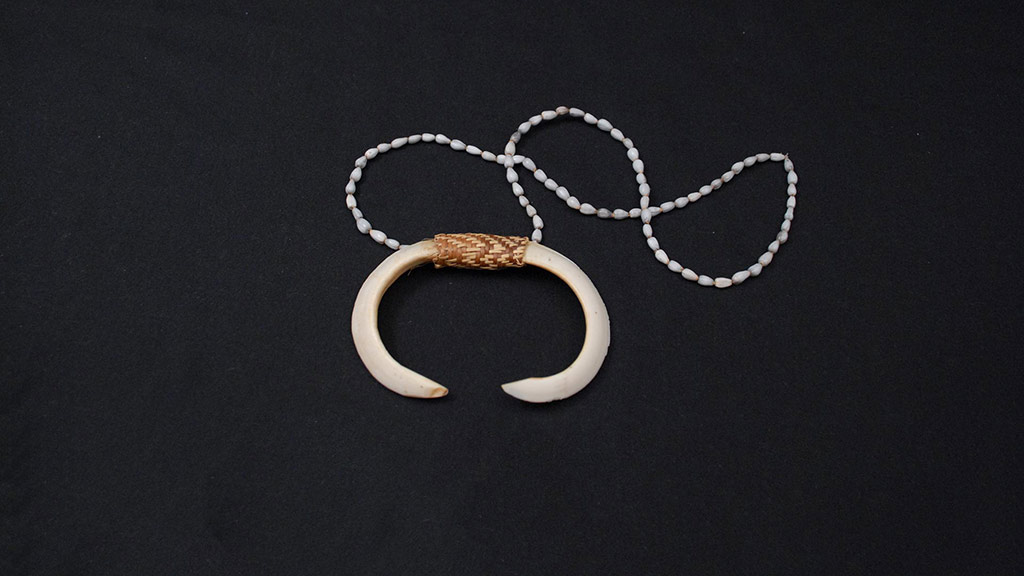 Necklace Ornaments such as this necklace are worn by men of the Highlands, Sepik and other regions of Papua New Guinea for festivals and ritual events and are emblems of cultural identity. Traditionally made with shells, beads and boar’s tusks, they are less commonly produced or worn today than in the past. Papua New Guinea Highlands 2004.17.0053
Necklace Ornaments such as this necklace are worn by men of the Highlands, Sepik and other regions of Papua New Guinea for festivals and ritual events and are emblems of cultural identity. Traditionally made with shells, beads and boar’s tusks, they are less commonly produced or worn today than in the past. Papua New Guinea Highlands 2004.17.0053
